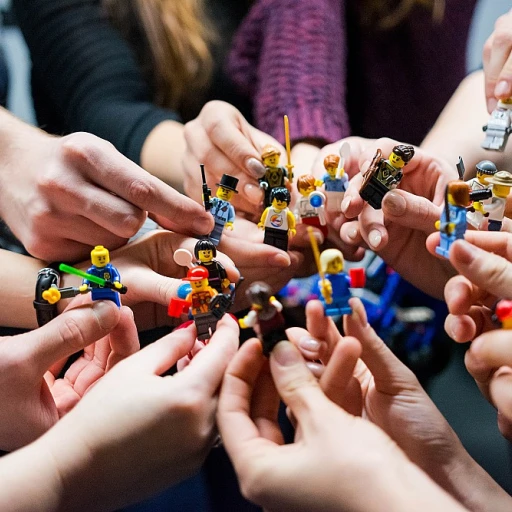Understanding the Importance of Professional Praise
The Value of Acknowledging Hard Work in the Workplace
In the intricate web of human resources, understanding why professional praise matters is foundational. Employee recognition is not just a formal obligation but a strategic necessity in today's dynamic work environment. When we pause to praise employees for their hard work, we are effectively boosting workplace culture and strengthening employee engagement. Professional compliments play a vital role in fostering a positive atmosphere. They help team members feel valued and appreciated, directly impacting their motivation and productivity. A culture rich in professional praise reflects a workplace where people thrive, not just survive. Recognition goes beyond mere acknowledgment of good work. It's about building an environment where employees feel seen for their problem-solving abilities and leadership skills. This isn't just about throwing compliments around. It's about meaningful, specific feedback that highlights the unique contributions of individuals within a team. To explore more about enhancing feedback mechanisms, check our detailed piece on crafting effective engagement questions in HR tech. Understanding the nuances of effective praise helps reinforce trust and collaboration among team members, ultimately leading to a more cohesive and efficient workforce. Organizations aiming to cultivate a dedicated and committed workforce consistently invest in recognizing and appreciating their employees' talents.The Role of Technology in Facilitating Praise
The Boundless Potential of Tech-Enhanced Praise
Leveraging technology to enhance professional praise in the workplace offers unparalleled opportunities for growth and positivity. As companies continue to adopt more digital solutions, recognizing the impact of tech-enhanced praise on employees becomes increasingly essential. This digital transformation not only streamlines the process of giving compliments and recognition, but also ensures consistency and inclusivity across teams.
Through various platforms, team leaders can instantly praise someone for their contributions, ensuring real-time feedback and engagement. These platforms allow for a seamless integration of praise into daily operations, fostering a more inclusive workplace culture where employees feel valued. With dedicated tools, the art of complimenting someone professionally can transition from a time-consuming effort to a more fluid aspect of leadership, embedding recognition deep within the workplace environment.
Moreover, digital solutions offer a platform for specific, personalized feedback, making every praise message meaningful. Employees appreciate the acknowledgment of their hard work and skills. When someone receives professional compliments that are specific to their contributions, it strengthens their sense of purpose and motivates them to contribute even more.
By incorporating tech solutions into employee recognition systems, companies can also track and analyze patterns in praise distribution, thus addressing any gaps in the provision of employee praise. This data-driven approach to praise further optimizes employee engagement strategies, ensuring that no one is left feeling undervalued.
For companies willing to dive deeper, exploring resources like self-evaluation examples can provide valuable insights into how different forms of recognition affect and are perceived by diverse employees.
Crafting Meaningful Praise Messages
Creating Messages that Resonate with Impact
In the contemporary work environment, effectively composing praise messages is an integral part of nurturing a positive workplace culture. Compliments should be tailored to recognize the specific achievements and skills of team members, making employees feel genuinely appreciated for their hard work. To ensure that praise resonates, it must be both sincere and specific. First and foremost, focus on individual achievements. When praising someone professionally, highlight the particular project or task they excelled in. For instance, noting how an employee solved a complex problem or demonstrated exceptional leadership skills provides a clear indication of the value they bring to the team. Compliments like these make employees feel valued and motivate them to maintain high performance levels. Notably, while crafting messages of praise, it is important to align them with the company's overarching objectives. When team members see a connection between their good work and the organization's goals, they are more likely to feel engaged and invested in the workplace. However, effective praise extends beyond merely saying "good job." Instead, it involves considerate feedback, which contributes significantly to employee engagement. Recognizing employees regularly and professionally is crucial; it fosters a supportive work environment characterized by open communication and mutual respect. Lastly, it is essential to consider the platform used to deliver your message. Technology plays a pivotal role in facilitating employee recognition by providing diverse channels to convey praise. Utilizing these digital tools ensures that compliments are not only timely but also publicly acknowledged when appropriate. By mastering the art of professional praise, organizations can enrich their workplace culture, boost morale, and improve overall performance.Integrating Praise into Performance Management Systems
Embedding Praise in Performance Management
Integrating praise into performance management systems is a strategic move that can significantly enhance workplace culture and employee engagement. When employees feel recognized for their hard work and skills, it boosts their morale and productivity. Here’s how to effectively incorporate professional praise into your performance management framework:
- Automate Recognition: Leverage technology to automate the process of recognizing employees. This can be done through platforms that allow team members to give peer recognition or managers to acknowledge good work in real-time. Automation ensures that no praise-worthy action goes unnoticed.
- Set Clear Criteria: Establish specific criteria for what constitutes praise-worthy actions. This helps in maintaining consistency and fairness in employee recognition. Clear guidelines ensure that all employees understand what behaviors and achievements are valued.
- Link Praise to Goals: Connect praise to individual and team goals. When employees see a direct link between their efforts and organizational objectives, it reinforces the importance of their contributions and encourages continuous improvement.
- Provide Feedback: Use praise as a tool for constructive feedback. While it’s important to acknowledge achievements, it’s equally crucial to guide employees on how they can further develop their skills. This approach fosters a culture of continuous learning and development.
- Encourage Peer Recognition: Encourage team members to praise someone professionally. Peer recognition can be a powerful motivator and helps build a supportive work environment. It also promotes a sense of community and collaboration among employees.
By embedding praise into performance management systems, organizations can create a positive and motivating work environment. This not only enhances employee satisfaction but also drives better performance and results.
Overcoming Challenges in Digital Praise
Addressing Digital Hurdles in Praise Communication
In the rapidly evolving digital workplace, recognizing and addressing the challenges of virtual praise is paramount. While technology facilitates the process of professional praise, it also introduces unique obstacles that require astute navigation. Ensuring that praise does not lose its human touch in digital communication is crucial. Many employees find it difficult to express compliments professionally through text. This lack of personal interaction can make employee praise seem impersonal. To overcome this, focus on specific feedback, highlighting both the hard work and skills that someone professionally demonstrates. This approach not only ensures clarity but also makes the recipient feel genuinely valued. Another challenge is ensuring that every team member receives recognition, not just those most vocal or visible. Encourage peer recognition, a practice where team members praise each other's contributions. This promotes a positive workplace culture and makes employees feel appreciated across the board. Additionally, while integrating praise into performance management systems can enhance employee engagement, it's important to balance frequency and sincerity. Offering praise too frequently, without a basis, can dilute its impact. Instead, strategically recognize good work, addressing problem-solving and leadership skills, to ensure a genuine work environment. Lastly, remember to maintain a line of communication. This might involve regular meetings where employees can discuss feedback openly or using digital platforms that facilitate professional compliments in a seamless way. Continuous recognition is an ongoing process aimed at creating a great workplace for all.Best Practices for Continuous Recognition
Ensuring Consistent Praise in a Dynamic Workplace
In the fast-paced environment of today's workplace, it's crucial for organizations to cultivate a culture of continuous recognition. By doing so, employees feel valued and appreciated, leading to increased engagement and productivity. To achieve this, it's essential to prioritize positive feedback and professional compliments regularly. One way organizations can maintain this flow of appreciation is through regular check-ins and feedback sessions. This ensures that praise is not just a one-time event but a consistent practice that acknowledges the ongoing hard work of employees. Team members should be encouraged to give peer recognition as well, as this fosters a sense of camaraderie and team spirit. Here are some best practices for fostering a culture of continuous recognition:- Set Timely Reminders: Utilize technology to send reminders for regular praise. Whether it’s weekly or monthly, having automated prompts encourages leaders to acknowledge good work and problem-solving skills.
- Make Praise Specific and Relevant: Instead of generic compliments, focus on specific achievements. For example, highlighting a person’s leadership skills in managing a project makes the praise more meaningful and memorable.
- Encourage Peer-to-Peer Recognition: Empower employees to actively praise someone professionally within the team. Implementing a system where team members can recognize each other's contributions enhances the overall workplace culture.
- Integrate with Performance Management Systems: Ensure that recognition is part of the performance evaluation process. By including praise as a criterion, it reinforces its value and demonstrates the organization's commitment to a positive work environment.
- Leverage Technology for Visibility: Platforms that display employee praise publicly can magnify its impact. Recognizing achievements in front of the team allows others to appreciate and celebrate their colleagues' successes.













